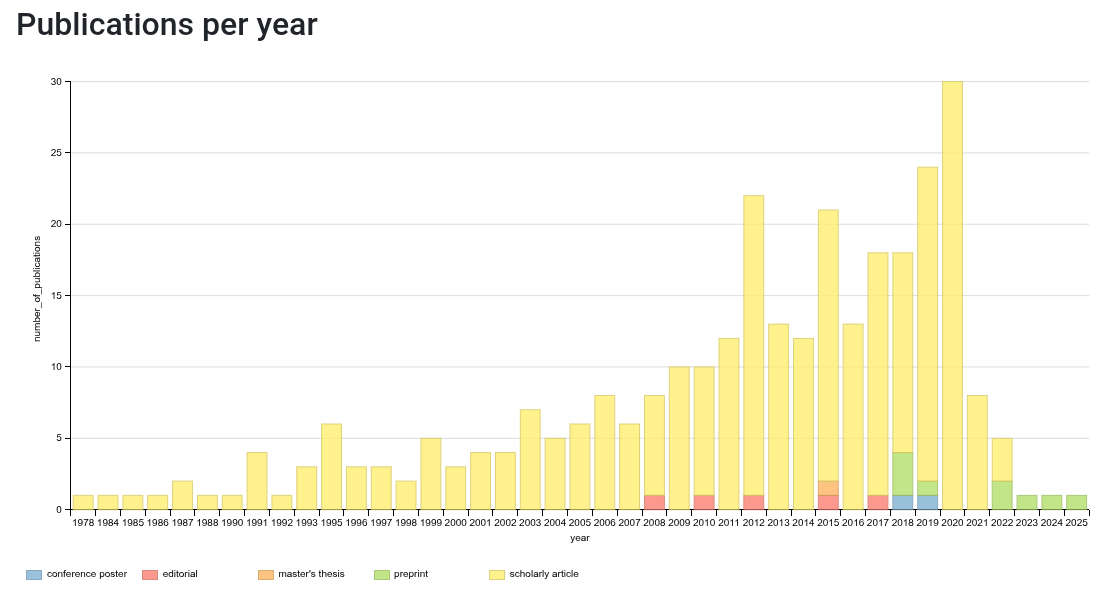Curation is an essential part of doing research
Depending on your exact definition of doing science, keeping track as precise as possible of your observations is an essential part of doing science. The precision should be high enough that mistakes are obvious. This pattern is, of course, not limited to doing science and we see this in open source development too. Unfortunately, in the modern way of doing science, this is not getting the attention it should get. Worse, with narratives (stories) about the research, in the form of journal articles, are generally considered more important that a precise description of the observations.
Is that a big issue? Hell, yes. Where do you think the FAIR ideas came from? And why FAIR in ten years has not brought about the change it was hoping for?
For me, my fascination for curation started as a student, around 1995, with the Dictionary on Organic Chemistry. At that time, my interest came from wanting to learn about chemistry and biology. During my M.Sc. and PhD, it was obvious how essential it was to derivating correct scientific conclusions from your experiment. Data, knowledge, and software alike, imo. And because curation is expensive, not having to repeat it, I prefer to do it as Open Science.
Curation
Of course, curation has been part of doing science, but to a large extens is separate step from doing science. It is done by database developers, librarians, and chemo- and bioinformaticians. For example, Chemical Abstracts Service (CAS) started over 100 years ago and started indexing chemical structures in 1965. The curation is an ongoing process, also for old records.
Biocuration is getting more and more attention:

The recognition and rewarding by having the International Society for Biocuration (ISB, Scholia page) should not be underestimated (doi:10.1038/455047A). Their Annual International Biocuration Conferences have been running since 2005. And with their awards, they give the biocuration work recognition and, literally, rewarding:
- Biocuration Career Award (2016-2021)
- Excellence in Biocuration Early Career Award (2022-)
- Excellence in Biocuration Advanced Career Award (2022-)
- Exceptional Contribution to Biocuration Award (2017-)
My curation Curriculum Vitae
I don’t have a good curation CV. For a large extend because the curation has been part of a study. The curation itself does not get recognized, and only the journal article does. With datasets slowly getting more recognition, so does data curation, but data curation is not really part of how we do FAIR at this moment, and via this route not getting the attention it gets.
But since I have been updating my CV anyway, I dug up some curation I am proud of:
- the Dictionary on Organic Chemistry, which no longer exists, but it started my Open Science chemistry research
- the Blue Obelisk Data Repositry (BODR), which has been part of various GNU/Linux distributions (see also doi:10.1021/ci050400b). A new version is long overdue
- I contributed hundreds of NMR spectra with uncommon nuclei to NMRShiftDb
- Wikidata, see this preprint, but also many small projects, like adding CXSMILES for polymers, and main subject annotation in Scholia
- WikiPathways (see these blog posts), where I started curating metabolites in 2012, set up a computer-assistent curation platform using SPARQL, and were an early curator of SARS-CoV-2 biological processes
- citation intent annotation with the Citation Typing Ontology, see this Scholia overview
- nanosafety ontology and data: the eNanoMapper Ontology (ENMO), NanoWiki, JRC nanomaterial index and the ERM indentifier database
- made RDF for supplementary information (e.g. this NanoE-Tox spreadsheet, full databases, like ChEMBL and NMRShiftDb
- organized an online ChemCuration event (inspired by the ISB annual meetings!)
I am also curation my blog, which was originally in blogger.com but being ported to Markdown with extra annotation. That includes updating URLs and annotation of blog posts with chemicals, grants, and intention-typed citations.
Long tail
Of course, I have my Wikipedia edits, and contributed to projects like Bioregistry.io, FAIRsharing, regularly submit missed mentions to Altmetric.com, etc. There is a long tail in curation. And there is a lot of curation hidden in my literature list.
And that long tail matters to me. I want every researcher to pick up the challenge to curate their own research output. Put your experimental data in databases, add important provenance, get the details rights. This is essential to reduce the cost of doing research, and that is more important than ever.
BTW, I must note that our bioinformatics team colleagues too have done a tremendous amount of biocuration, in WikiPathways (Denise, Freddie, Susan), in nanosafety (Jeaphianne, Ammar), and in toxicology (Marvin), just to name a few. Often together with B.Sc. and M.Sc. students (which can work really well).
Award nomination
And I hope this makes it clear why I am delighted to was nominated last week for an ISB Excellence in Biocuration Advanced Career Award. The list of past awardees is impressive, as are the other nominations: Laurel Cooper, Oregon State University/USA, Steven Marygold, University of Cambridge/UK, Saurabh Raghuvanshi, University of Delhi/India, and Kimberly Van Auken, California Institute of Technology/USA.
It’s an honor to be listed along these other nominees and being nominated is a great recognition! With a thank you to the person who proposed my nomination.
You can use your Mastodon or other ActivityPub-based Fediverse-account to comment on this article by leaving a publicly visible reply to this associated post. Content warnings are supported. You can also delete your comments at any time by deleting your post on the Fediverse.